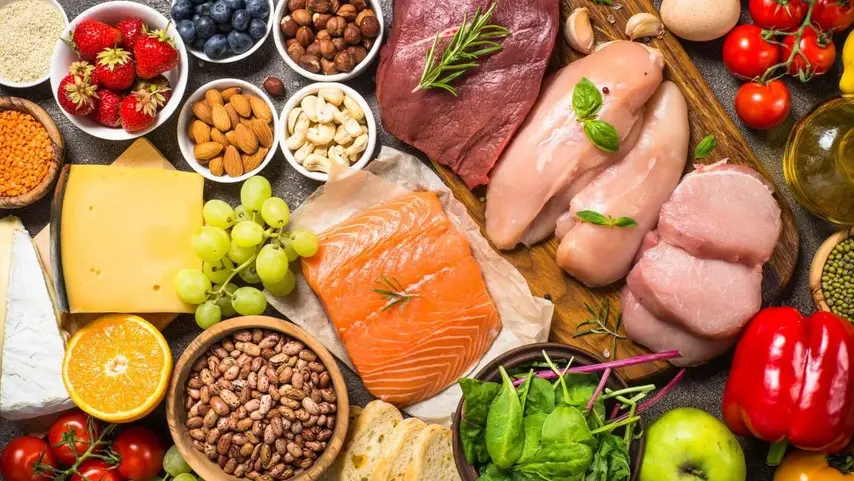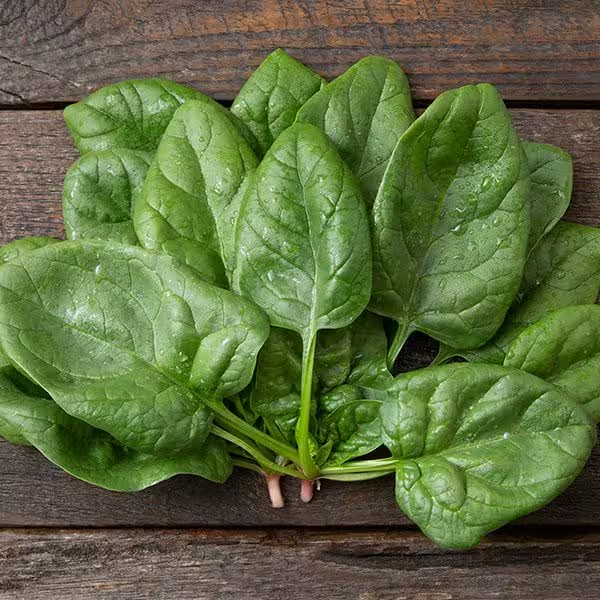The Atkins Diet has helped millions of people worldwide shed unwanted weight and improve their overall health by focusing on low-carb, high-protein, and high-fat foods. As a comprehensive guide to this revolutionary diet, we’ll go beyond the basics, exploring its detailed workings, food choices, health benefits, potential drawbacks, and much more.
Science Behind the Atkins Diet
The Atkins Diet isn’t just about cutting carbs—it’s rooted in metabolic science. Here’s how it works on a biological level:
1. Glucose vs. Ketones
Normally, your body uses glucose (from carbohydrates) as its primary fuel. However, when carbs are limited, your liver begins to convert stored fat into fatty acids and ketone bodies, which become your new fuel source. This process is called ketosis and is the core of how the Atkins Diet promotes fat burning.
2. Fat Burning Efficiency
While in ketosis, your body efficiently burns stored fat for energy. Many people on the Atkins Diet report increased mental clarity and sustained energy levels, attributing these benefits to their body’s reliance on fat, rather than glucose, for fuel.
3. Stabilized Blood Sugar
Low-carb diets like Atkins also help to stabilize blood sugar. Without the regular intake of carbs and sugar, insulin levels drop, reducing the likelihood of blood sugar spikes and crashes. This can be especially beneficial for individuals with insulin resistance or type 2 diabetes.
The Role of Macronutrients in the Atkins Diet
While most diets focus on calorie counting, the Atkins Diet emphasizes the importance of macronutrients—carbohydrates, fats, and proteins. Here’s how each one plays a role in this diet:
1. Protein
Protein is a cornerstone of the Atkins Diet. It keeps you full, helps preserve muscle mass while losing weight, and stabilizes blood sugar levels. Sources of protein on Atkins include meat, poultry, fish, eggs, and plant-based options like tofu.
2. Fats
Healthy fats are crucial to the success of the Atkins Diet. By encouraging the consumption of fats from sources like avocados, olive oil, and fatty fish, the diet ensures that your body has a steady source of energy while in ketosis.
3. Carbohydrates
The restriction of carbs is what sets Atkins apart. By significantly reducing carb intake, especially in the early stages, the diet forces your body to switch to fat-burning mode. As you progress through the phases, carbs are slowly reintroduced in controlled amounts, allowing for flexibility based on individual tolerance.
Health Benefits of the Atkins Diet
Besides weight loss, the Atkins Diet has a variety of health benefits supported by scientific research. Let’s dive into some of the potential positive outcomes:
1. Heart Health
Contrary to the myth that a high-fat diet harms the heart, research suggests that the Atkins Diet can improve cardiovascular health. Studies have shown reductions in triglycerides, LDL cholesterol (the “bad” cholesterol), and increases in HDL cholesterol (the “good” cholesterol), all of which contribute to heart health.
2. Improved Cognitive Function
The brain is a voracious consumer of energy, and many people report that they think more clearly and focus better when they switch to a fat-based fuel source, such as ketones. While more research is needed, some studies suggest that low-carb diets like Atkins may improve cognitive function and protect against neurodegenerative diseases like Alzheimer’s.
3. Better Blood Pressure
For those with high blood pressure, the Atkins Diet may offer some relief. Weight loss, combined with lower insulin levels, can lead to better blood pressure regulation.
4. Diabetes Management
The Atkins Diet can be especially beneficial for people with type 2 diabetes or prediabetes. By reducing carbohydrate intake, the diet can improve insulin sensitivity and stabilize blood sugar levels. Many followers of the Atkins Diet have reported a significant reduction in their need for diabetes medications.
Potential Drawbacks of the Atkins Diet
As effective as the Atkins Diet can be, it isn’t without its challenges. Understanding the potential drawbacks can help you navigate them successfully:
1. Nutrient Deficiency
During the Induction phase, the Atkins Diet significantly limits fruits, grains, and certain vegetables, which could potentially lead to nutrient deficiencies, especially in vitamins like vitamin C, and minerals like magnesium. Ensuring that you consume a variety of low-carb vegetables and perhaps considering supplementation can mitigate this issue.
2. Potential for Keto Flu
Many people who begin the Atkins Diet experience what’s known as the “keto flu” in the first week or two. Symptoms can include headaches, fatigue, nausea, and irritability, all of which stem from the body’s adaptation to burning fat instead of carbohydrates. Drinking plenty of water and consuming enough electrolytes (e.g., sodium, potassium) can help ease these symptoms.
3. Risk of Overconsumption of Unhealthy Fats
While the Atkins Diet emphasizes the consumption of healthy fats, some people may misunderstand this and overconsume unhealthy saturated or trans fats. The key is to focus on heart-healthy fats like those found in avocados, olive oil, nuts, and fatty fish, rather than processed meats and deep-fried foods.
4. Social Challenges
Following the Atkins Diet can be socially challenging. Many traditional meals, snacks, and drinks are carb-heavy, making it difficult to eat out or attend social gatherings without careful planning.
How to Stay Motivated on the Atkins Diet
Maintaining motivation on any diet can be tricky, but the Atkins Diet offers several strategies to stay on track:
1. Set Short-Term and Long-Term Goals
Breaking down your weight loss or health goals into smaller, achievable milestones can help you stay motivated. For instance, focus on losing 5 pounds or sticking to Phase 1 for two weeks rather than worrying about the entire journey.
2. Celebrate Non-Scale Victories
It’s easy to get discouraged if the scale doesn’t move as fast as you’d like, but pay attention to other markers of progress. Look for changes in how your clothes fit, increased energy levels, or improvements in your mood and mental clarity.
3. Find a Support System
Having a friend, family member, or online community to support you can make all the difference in sticking to the Atkins Diet. Whether it’s sharing recipes or troubleshooting challenges, connecting with others can boost your morale.
4. Track Your Progress
Use apps or food diaries to track your daily carbohydrate intake and keep a close eye on how your body responds. Many people find that keeping a record of their meals, weight, and measurements helps them stay accountable.
Common Mistakes People Make on the Atkins Diet
Although the Atkins Diet is relatively straightforward, there are some common mistakes that people often make. Here’s how to avoid them:
1. Not Eating Enough Vegetables
Even though the Atkins Diet limits carbs, vegetables, especially non-starchy ones, are essential for fiber, vitamins, and minerals. Many people mistakenly think they need to cut out vegetables altogether, but the key is to choose low-carb veggies like spinach, broccoli, and zucchini.
2. Eating Too Much Processed Food
While it’s easy to rely on processed, low-carb convenience foods like bacon and cheese, they often contain unhealthy fats and additives. Focus on whole, nutrient-dense foods like lean meats, eggs, and fresh vegetables.
3. Ignoring Hidden Carbs
Many packaged foods marketed as “low-carb” or “Atkins-friendly” contain hidden carbs in the form of fillers, thickeners, or sugars. Always check nutrition labels to make sure you’re staying within your carb limits.
4. Overdoing Protein
It’s tempting to load up on protein when following the Atkins Diet, but remember that excess protein can be converted into glucose, which may kick you out of ketosis. Focus on moderate amounts of protein and make healthy fats your primary energy source.
Atkins Diet for Different Lifestyles
One of the advantages of the Atkins Diet is its flexibility. Here’s how it can be adapted to different lifestyles:
1. Atkins for Vegetarians and Vegans
Though the Atkins Diet is typically meat-heavy, it can be adapted for vegetarians and vegans. Protein sources such as tofu, tempeh, seitan, and plant-based protein powders can be used. Vegetarians can also enjoy eggs and dairy products, while vegans can focus on nuts, seeds, and low-carb veggies.
2. Atkins for Athletes
For athletes or those with physically demanding jobs, the Atkins Diet can still be an effective way to fuel performance. While carbs are restricted, many athletes incorporate small amounts of carbs from healthy sources like sweet potatoes and quinoa around their workouts to ensure proper energy levels and recovery.
Debunking Common Myths About the Atkins Diet
There are several myths about the Atkins Diet that continue to persist. Let’s clear up some of the misconceptions:
1. You Can Eat Unlimited Fat
While the Atkins Diet encourages healthy fats, it doesn’t mean you should go overboard. Calories still matter, and consuming too many unhealthy fats can increase your risk of heart disease and other health problems.
2. Atkins Is a Meat-Only Diet
Although the Atkins Diet allows for a wide variety of meats, it’s not just about eating bacon and steak all day. A balanced Atkins plan includes plenty of non-starchy vegetables, healthy fats, and even some fruits in the later phases.
3. It’s Only About Weight Loss
While weight loss is a significant benefit, the Atkins Diet can also improve heart health, stabilize blood sugar levels, and boost overall wellness.
Atkins Diet vs. DASH Diet: A Comparative Analysis
While the Atkins Diet is known for its low-carb, high-protein approach, the DASH Diet (Dietary Approaches to Stop Hypertension) is another well-regarded eating plan that focuses on reducing blood pressure through a balanced diet. Let’s explore the differences and benefits of each:
1. Approach to Carbohydrates
- Atkins Diet: The Atkins Diet strictly limits carbohydrate intake, especially in the early stages, with the goal of inducing ketosis, a fat-burning metabolic state. As you progress through the phases, you gradually reintroduce carbs to find your personal tolerance level.
- DASH Diet: Unlike Atkins, the DASH Diet does not restrict carbohydrates. Instead, it encourages the consumption of whole grains, fruits, and vegetables. The focus is on reducing sodium and increasing nutrient-dense foods like potassium and calcium to lower blood pressure.
2. Focus on Nutrients
- Atkins Diet: Atkins focuses more on macronutrients (carbs, proteins, and fats) rather than micronutrients (vitamins and minerals). While it allows for nutrient-dense vegetables, it doesn’t prioritize specific nutrients as much as DASH.
- DASH Diet: The DASH Diet places a heavy emphasis on specific nutrients that are beneficial for heart health, such as potassium, magnesium, and calcium. It also promotes a lower sodium intake, which is key for managing high blood pressure.
3. Weight Loss
- Atkins Diet: Weight loss is a primary goal of the Atkins Diet. By restricting carbs and encouraging the body to burn fat for energy, it can lead to significant weight loss, especially in the early phases. Many people find Atkins effective for shedding pounds quickly.
- DASH Diet: Although the DASH Diet can result in weight loss, it isn’t specifically designed for that purpose. It’s more of a long-term eating plan for heart health and blood pressure management, and weight loss is often a secondary benefit.
4. Heart Health
- Atkins Diet: The high-fat nature of the Atkins Diet can raise concerns about heart health, especially if followers rely too heavily on unhealthy fats like processed meats and fried foods. However, research has shown that if done correctly—with an emphasis on healthy fats like those found in avocados and nuts—the Atkins Diet can improve cholesterol profiles.
- DASH Diet: The DASH Diet is explicitly designed to improve heart health. It’s backed by extensive research showing that it lowers blood pressure and reduces the risk of cardiovascular diseases. The focus on lean proteins, whole grains, and low-fat dairy makes it one of the most heart-friendly diets.
5. Flexibility and Sustainability
- Atkins Diet: The Atkins Diet can feel restrictive, especially during the Induction phase when carbs are severely limited. However, it becomes more flexible as you move through the phases and reintroduce more carbs. Some people find it difficult to maintain long-term due to the initial restrictions on fruits, grains, and certain vegetables.
- DASH Diet: The DASH Diet is often seen as more sustainable because it includes a wider variety of foods, including whole grains, fruits, and vegetables. There’s no carb restriction, which makes it easier for people to follow in the long term without feeling deprived.
6. Blood Sugar and Diabetes Management
- Atkins Diet: Atkins has been shown to help regulate blood sugar levels, making it a good option for those with type 2 diabetes or insulin resistance. By reducing carbs, the diet minimizes blood sugar spikes and improves insulin sensitivity.
- DASH Diet: The DASH Diet is also beneficial for those with diabetes, but it doesn’t focus on carb reduction. Instead, its emphasis on whole grains and fiber can help manage blood sugar levels more gradually.
7. Food Choices
- Atkins Diet: On Atkins, you’ll focus heavily on proteins and fats like meat, poultry, fish, eggs, cheese, and healthy oils. Low-carb vegetables are encouraged, but fruits, grains, and starchy vegetables are restricted, especially in the early phases.
- DASH Diet: The DASH Diet encourages a wide variety of foods, including fruits, vegetables, whole grains, low-fat dairy, lean proteins, and nuts. It emphasizes reducing sodium and unhealthy fats but doesn’t restrict entire food groups like carbs.
8. Who It’s Best For
- Atkins Diet: The Atkins Diet is ideal for people who want to lose weight quickly and can stick to a structured eating plan that limits carbs. It works well for those who enjoy high-protein, high-fat meals and are willing to restrict carbohydrates for the sake of fat-burning.
- DASH Diet: The DASH Diet is best for individuals looking to improve heart health, reduce blood pressure, and maintain a balanced, nutrient-rich diet. It’s suitable for people who prefer a more inclusive eating plan with no major food restrictions.
Conclusion: Which Diet Is Right for You?
The Atkins Diet offers a low-carb, high-protein, and high-fat way of eating that can lead to weight loss and health improvements. With its emphasis on protein and fat, it may suit those who enjoy rich, hearty meals. However, like any diet, it’s not a one-size-fits-all approach. Be sure to consult with a healthcare provider to see if Atkins aligns with your health needs and goals.
Choosing between the Atkins Diet and the DASH Diet depends largely on your health goals and lifestyle preferences. If your primary objective is weight loss and you can handle carb restriction, the Atkins Diet may be a good fit for you. However, if your focus is on heart health, reducing blood pressure, or maintaining a balanced, long-term diet, the DASH Diet offers a more flexible and nutrient-rich approach.
Ultimately, both diets have proven health benefits, and consulting a healthcare provider can help determine which one aligns better with your individual needs.




